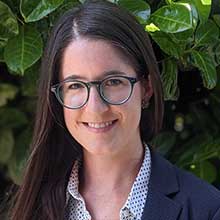Listening Time — 19:02
PTJ walks you through the complexities around multiparticipant therapy provision in SNFs.
PTJ Editor-in-Chief Alan Jette talks with Rachel Prusynski, PT, DPT, board-certified clinical specialist in neurologic physical therapy, about her secondary analysis on more than 1 million post-acute rehabilitation stays in skilled nursing facilities in 2018, which found that the organizational characteristics of SNFs tended to have stronger associations with multiparticipant therapy provision than patient factors.
In this podcast, Prusynski walks you through the complexities and associations, beginning with a look at the 2019 Centers for Medicare & Medicaid Services implementation of a new reimbursement scheme (patient-driven payment model, or PDPM) and its implications. Previously, under the Research Utilization Group approach, therapy volume or combined therapy minutes per week was the primary driver of payment in SNFs, which, Prusynski explains, "ushered in this huge increase in therapy intensity in SNFs"; then Medicare decided that there was not a similar increase in patient complexity to warrant that increase.
Under PDPM, Medicare no longer tied reimbursement to therapy service volume, instead shifting to a complicated case mix group system. Says Prusynski, "The message to therapists really was that we’re going to determine your payment [based] more on patient diagnosis and functional status and leave therapy minutes out of the calculation altogether."
As Jette notes, this was "a real game changer" — and then COVID-19 entered the mix. Because this study focused on 2018 data, Jette notes, it provides "a baseline picture before the implementation of this new reimbursement [scheme], so once we move through this COVID experience," the study will allow a better sense of the scheme’s impact.
The results showed there were slightly higher odds of receiving multiparticipant therapy in patients who had better function and better cognitive status, who were in the SNF for a longer length of stay, and who received more therapy overall.
Prusynski shares her insights on regional differences for multiparticipant therapy use; variability in practice in post-acute care, costs, service provision, and outcomes; the impact of SNF for-profit ownership, contract staffing, and low five-star quality ratings; and quality over quantity in making individualized decisions for patients.
From Jette’s perspective, "CMS still [isn’t] really looking at … where therapy is really having an impact and then reimbursing providers for that." Prusynski contends that PDPM has some "good implications" for therapists, "because it’s not just based on minutes … but PDPM doesn’t have quality as a factor in the design at all, so it’s really up to [therapists] to make sure that … we’re still armed with evidence to make good clinical decisions."
Speakers

Alan M. Jette, PT, PhD, FAPTA, is editor-in-chief of PTJ: Physical Therapy & Rehabilitation Journal.

Rachel A. Prusynski, PT, DPT, board-certified clinical specialist in neurologic physical therapy, is a physical therapist and research and teaching associate, department of rehabilitation medicine, University of Washington, Seattle, Washington.